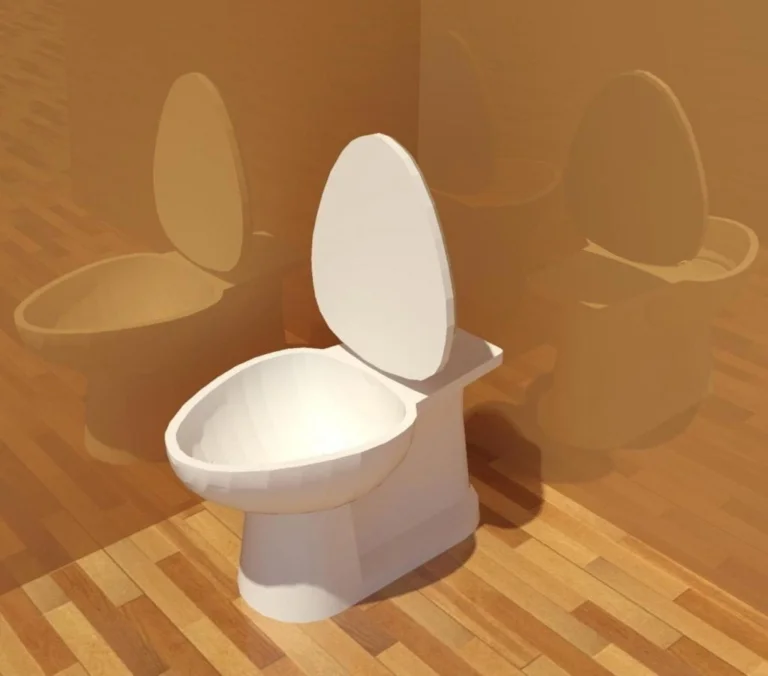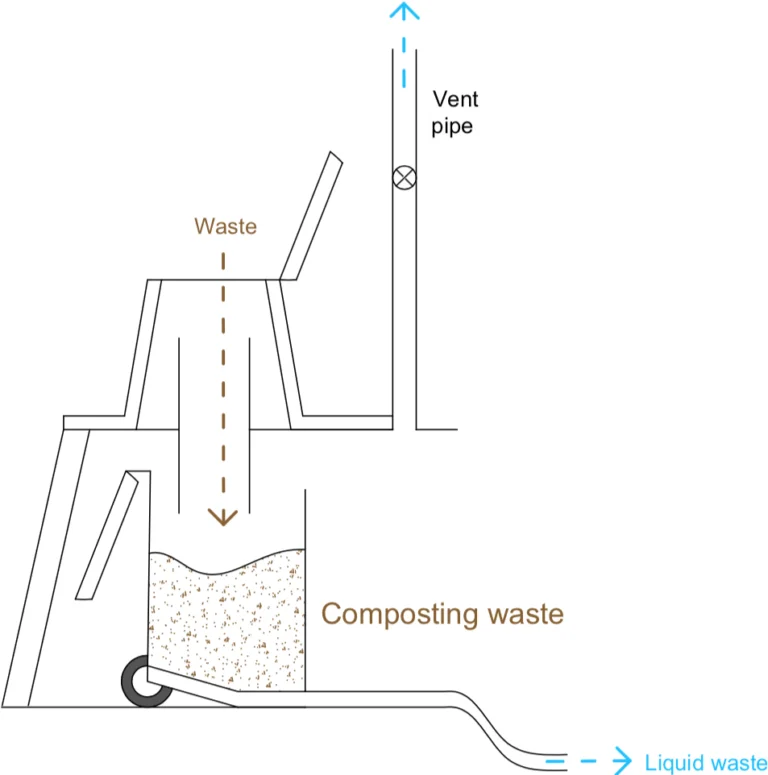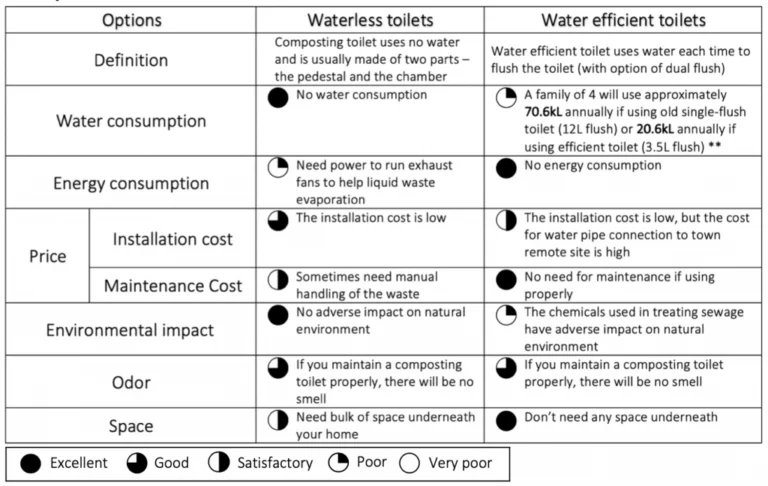Waterless Toilets
How can waterless toilets benefit my home?
The waterless toilets or composting toilets (CTs) use no water for flushing. The human excreta are treated into compost by biological processes. In order to reduce the water usage and water bill in houses, more and more people are showing interest in waterless toilets*.

Benefits
- Saving water—for Australia, one of the driest continents in the world, the use of CTs could save at least 20.6kL water annually for a family of 4**.
- Reducing adverse impacts on environment — by separating the pollutants from the waterways and natural environment.
- Eliminated the need of septic tanks— to store effluent before being discharged into sewage, hence avoiding the site restrictions of constructing septic tanks and consequent pollution problems.
- Producing fertilizer— if the waste has been maintained in sufficient and correct metabolism conditions.
- No odor— if maintained properly.
Comparison among different types of CTs
Continuous composting toilets
Continuous composting toilets usually consist two parts – a chamber which is installed inside the home and a pedestal (sometimes with a chute if needed) which is installed under the home. Because of the separation pedestal, this system could have enough space to maintain the continuous composting process. Hence this CT is called continuous composting toilet.

Advantages
- Could be constructed by owner-builder.
- Alter a flush toilet with little adjustment.
- The end products can be removed gradually.
Disadvantages
- Need bulk of space under your home.
- Need pathogens to compost waste which may spread disease if not maintained properly.
- Cannot be used if the chamber for composting breaks.
Self-contained composting toilets
Self-contained CTs can be used when there is not enough space underneath the home, which fits with a small fan and has the ability to serve the family of 3 or 4.
Batch composting toilets
Batch composting toilet is one of the self-contained CTs with integrated unit which means it will not require the bulk of space under your home. The waste is stored in a series of buckets or trays and needs further composting treatments.

Advantages
- Do not need bulk of space under your home.
- The pipe of the fallow container could avoid recontamination since composting waste and liquid waste are separate.
Disadvantages
Need to change the trays often.
Comparison between waterless toilets and water efficient toilets

As shown in the table above, if the waterless toilets have been designed and maintained properly, they can conserve water resources and reduce adverse impacts on environment by separating the pollutants and effluent from the natural environment. They can save the money on water bills and the cost on water pipe connection from town to remote site further.
* Thank Wenjie Qin for providing the 3D rendering picture.
**Energy.gov.au. Water efficiency. Retrieved from https://www.energy.gov.au/households/water-efficiency
For more information about sustainable home design, click here.
Written by Chen Qiao. Checked by Mubashir Bashir. Last updated: 22 January 2019.
